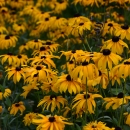States
New York, VermontLandlocked Atlantic salmon were extirpated from Lake Champlain in the early 1800s. In 2010, we initiated a long‐term adaptive management project focused on increasing river‐runs of salmon to enhance in river fisheries and restore natural populations. Major accomplishments include: Developed new hatchery methods to increase adult returns to rivers 3‐5 fold; Captured wild fry for first time in 150 years! (Winooski 2016, Boquet 2017); Established parentage based tagging program to evaluate broodstocks and stocking methods; Improved fish passage fish passage
Fish passage is the ability of fish or other aquatic species to move freely throughout their life to find food, reproduce, and complete their natural migration cycles. Millions of barriers to fish passage across the country are fragmenting habitat and leading to species declines. The U.S. Fish and Wildlife Service's National Fish Passage Program is working to reconnect watersheds to benefit both wildlife and people.
Learn more about fish passage at dams; Identified reproductive success and habitats used in river; Supported adapt a salmon programs in schools.
Lake Champlain Angler Diary App Directions



